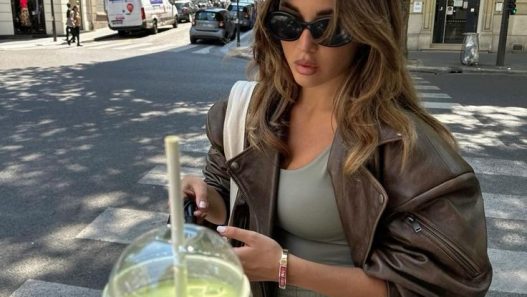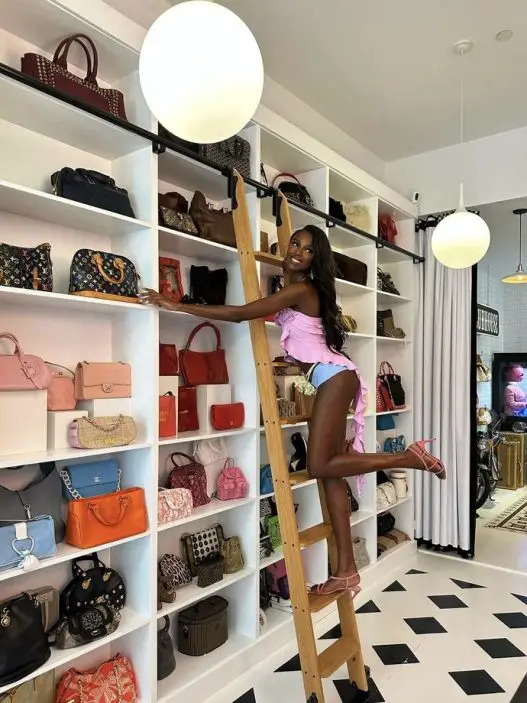Introduction
When it comes to fashion, trends come and go, but some styles remain timeless. One such style is “Old Money” fashion—a sophisticated, understated, and luxurious aesthetic often associated with wealth, tradition, and class. It is a look that prioritizes quality over quantity, subtlety over flashiness, and elegance over extravagance. But what exactly is “Old Money” style, and how can you incorporate it into your wardrobe? This guide breaks down the key elements of this classic style and how to achieve it.
What Is Old Money Style?
“Old Money” style refers to the fashion choices made by families or individuals who have inherited wealth over generations. This look is deeply rooted in classic, preppy, and tailored styles that reflect an appreciation for high-quality, understated elegance. Unlike “New Money” fashion, which often embraces bold, statement-making pieces and displays of wealth, “Old Money” fashion is all about subtlety. It speaks volumes through its focus on quality materials, timeless cuts, and conservative styling.
Key Characteristics:
- Understated Elegance: The goal is to look refined, not flashy.
- Timeless Pieces: Clothing that has stood the test of time and isn’t dictated by current trends.
- Quality Fabrics: Fine materials like wool, cashmere, silk, and linen are a staple.
- Tailored Fits: Clothing is often custom-made or tailored to ensure a perfect fit.
- Neutral Colors: Classic colors such as navy, black, gray, cream, and earth tones dominate the Old Money palette.
Key Elements of Old Money Style
To achieve the “Old Money” look, focus on the following key elements:
1. Timeless Wardrobe Staples
Old Money style revolves around a curated wardrobe full of timeless, versatile pieces. These are items that never go out of fashion and can be worn in various settings, from formal events to casual gatherings.
Essential Items:
- Tailored Suits & Blazers: A well-fitted blazer or suit jacket is a staple in the Old Money wardrobe. Choose classic colors like navy, black, or charcoal gray.
- Dress Shirts & Blouses: Opt for crisp, high-quality cotton shirts in classic shades like white, light blue, or pale pink.
- Chinos & Trousers: Well-tailored trousers made of wool or linen add a touch of sophistication.
- Pencil Skirts & A-Line Dresses: Women often wear these flattering, structured pieces, which exude elegance without being overly trendy.
2. High-Quality Fabrics
The fabrics in an Old Money wardrobe are always luxurious and durable. This includes natural fibers such as silk, cashmere, wool, and linen. These materials not only look luxurious but feel exquisite against the skin.
Popular Fabrics:
- Cashmere Sweaters: Soft and luxurious, cashmere sweaters are a signature of the Old Money look. They can be worn casually or dressed up with a pair of tailored trousers.
- Silk Scarves: A silk scarf can be a great accessory that adds a touch of class to any outfit.
- Wool Coats & Blazers: A wool coat, especially in camel or gray, is essential for colder months and exudes sophistication.
3. Neutral and Subdued Color Palette
The Old Money aesthetic relies on a neutral color palette. Think beige, navy, camel, white, gray, and dark green. These colors create a refined, timeless look that is far from garish or attention-seeking.
Color Guidelines:
- Navy & Black: These colors are associated with power and prestige.
- Earthy Tones: Greens, browns, and tans bring a sense of grounded elegance to any outfit.
- Pale Hues: Light pastels and creams are often used for shirts, blouses, or accessories.
4. Polished Accessories
Accessories in Old Money fashion are subtle yet elegant. The focus is on quality rather than flash, and they often serve as a symbol of taste and refinement.
Key Accessories:
- Leather Handbags: Opt for high-quality, structured handbags in neutral colors. Brands like Chanel and Hermes are staples in Old Money fashion.
- Pearls & Gold Jewelry: Simple, classic jewelry such as pearl earrings or delicate gold bracelets adds an understated elegance.
- Loafers & Brogues: Shoes should be well-made and polished. Classic loafers or brogues in leather are preferred over trendy sneakers or flashy footwear.
- Luxury Watches: A timeless, well-crafted watch is often the only visible sign of wealth in Old Money fashion.
How to Wear Old Money Style Every Day
While the “Old Money” style may seem reserved, it can be adapted to everyday wear without feeling stuffy or outdated. Here’s how you can incorporate this elegant style into your daily wardrobe:
1. Opt for Classic Fits
Choose clothing that fits well, but avoid overly tight or overly loose styles. Think tailored shirts, well-fitted pants, and dresses that hit at or just below the knee.
2. Mix High-End with Low-End
You don’t need a designer wardrobe to achieve an Old Money look. Focus on quality over quantity. Pair your tailored blazer with a simple white t-shirt or a silk blouse. This mix of high-end and affordable pieces will elevate your overall style.
3. Keep Hair & Makeup Simple
Old Money style extends to your beauty routine, too. Aim for clean, natural makeup and simple hairstyles. Soft waves, a classic bun, or a ponytail can enhance your elegance without looking overdone.
4. Avoid Flashy Logos
The hallmark of Old Money style is subtlety. Avoid wearing items with large, visible logos or branding. Instead, opt for clothing that speaks for itself through its quality and craftsmanship.
5. Invest in Timeless Outerwear
A well-tailored coat or jacket is a great way to add sophistication to your outfit. Opt for wool coats, trench coats, and classic pea coats in neutral tones for a stylish yet refined look.
Old Money Style vs. New Money Style
While both “Old Money” and “New Money” fashion convey wealth, their approaches differ significantly.
- Old Money Style is understated, with a focus on heritage, quality, and classic looks. It prioritizes subtlety over flashiness and emphasizes timeless fashion.
- New Money Style, on the other hand, embraces more flamboyant and trendy fashion choices. It often displays wealth through conspicuous consumption, such as bold designer logos and extravagant accessories.
Conclusion
Adopting Old Money style is about more than just wearing specific pieces—it’s about embodying a refined, understated approach to fashion that emphasizes quality, elegance, and class. By focusing on timeless staples, luxurious fabrics, and classic accessories, anyone can embrace this sophisticated aesthetic. So, whether you’re aiming to elevate your daily wardrobe or searching for the perfect look for a formal event, Old Money fashion offers a timeless guide to dressing with grace and dignity.




















